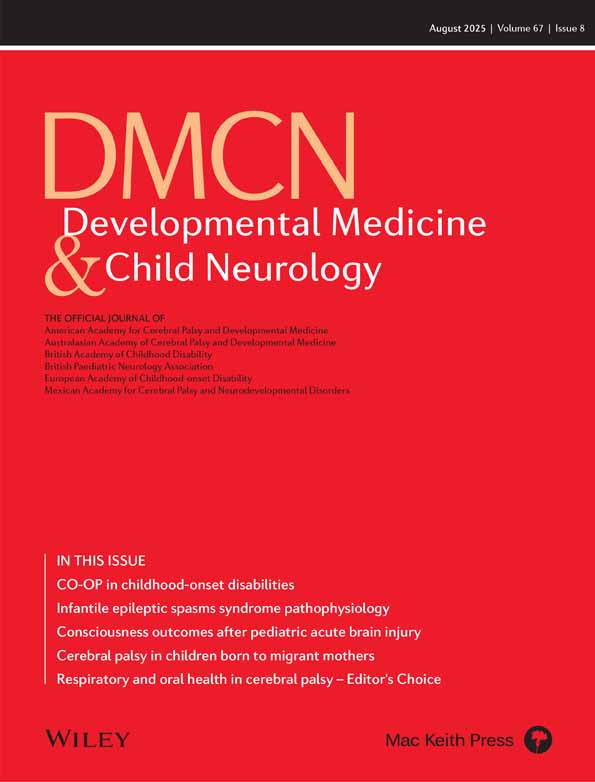Pilot survey of Hashimoto's encephalopathy in children
Abstract
Hashimoto's encephalopathy (HE) is a steroid responsive, relapsing encephalopathy associated with thyroid autoantibodies. Paediatric literature mainly consists of case reports of the disease. A questionnaire survey of 68 consultant paediatric neurologists was undertaken through the British Paediatric Neurology Association in 2002 to gather preliminary data about this condition. The response rate was 68% and a total of ten patients were identified: nine from the UK and one from Ireland. Complete clinical details were available on eight patients (seven females and one male). Age at presentation ranged from 10 to 15 years (mean 12y 7mo, SD 1y 1mo). Presenting features included seizures (n=7/8), encephalopathy (n=7/8), cognitive decline (n=4/8), behavioural problems (n=3/8), psychosis (n=2/8), myoclonus (n=1/8), and tremors (n=1/8). All had thyroid autoantibodies and four were also hypothyroid at diagnosis. One patient became hypothyroid during follow-up. Electroencephalograms (EEGs) showed high amplitude slow background rhythms in all patients, and one patient also had focal spikes. Cognitive deficits were identified in four patients and persisted in one over 2 years of follow-up. Six patients improved with steroids and two improved spontaneously. Two had relapsing courses during follow-up afer diagnosis (range 12-48 months). HE may be currently under-recognized in children and increased awareness can result in prompt diagnosis and treatment. Steroid therapy appears to be beneficial. Neuropsychological assessment is required in all cases and may guide steroid therapy. Long-term prognosis for cognition remains guarded at this time.




